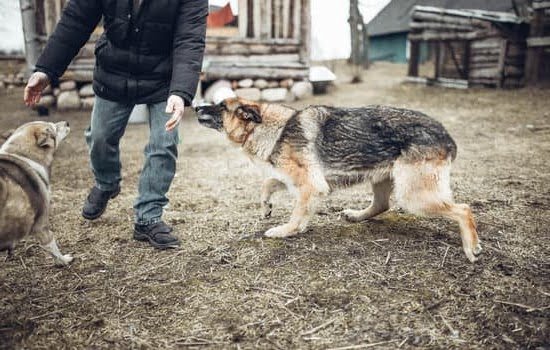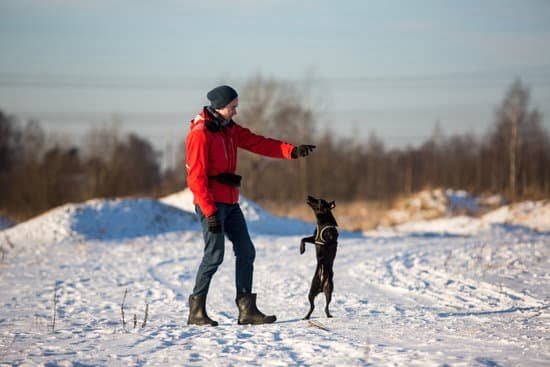Introduction
Shih Tzu dogs are small, adorable, and long-haired toy breeds known for their characteristic loving nature. They are highly intelligent and respond best to positive reinforcement training. Training a Shih Tzu is important because it helps to ensure that your dog develops good habits and knows how to behave both inside the house and outside in public. It also allows you to develop your bond with your pet by teaching him commands like “sit” or “down” which can be used to improve obedience and behavior. Proper training also teaches the owner when they should expect certain behaviors from their Shih Tzu, allowing them to be able to anticipate any trouble areas before they even arise. This comprehensive guide will explain exactly how to train your Shih Tzu properly so that you can have a happy and well-behaved pup in no time!
Establishing Positive Reinforcement
When training a Shih Tzu dog, it is essential to use positive reinforcement. Positive reinforcement means rewarding your pup every time they do something regarded as good behavior or demonstrate obedience. With this method, an owner is able to create a motivating environment focused on rewards and praise while gradually teaching the dog how they should interact with their owners and the environment around them. This can be done in a few ways, such as providing verbal praises when exhibiting desired behaviors, offering treats that can act as incentives for continuing practice, or providing small trinkets that symbolize success. It is important to be consistent with this sort of reward system to ensure your pup understands what behaviors you want them to emulate. Additionally, avoid using methods which instill fear or force as these will make your Shih Tzu fearful or aggressive towards you or other people and animals. Finally, it is crucial to make sure the training sessions are fun but also structured; this will help keep your pup engaged while allowing you both to learn together at a steady pace.
Setting Goals
Training a Shih Tzu is no easy task, so it’s important to have realistic expectations regarding the process. Before you start, set goals for yourself and decide how long you will spend training each day. It can help to abide by the “5-10 minute” rule—that is, try to do 5-10 minutes of formal training per day. This can make the process easier for both you and your Shih Tzu, who may quickly become overwhelmed or bored if training sessions are too long or too intense. Pick only one or two behaviour goals at a time; while it would be great if your Shih Tzu responded perfectly following just one session of training, this is highly unlikely to happen. Instead, focus on mastering each individual behaviour within a reasonable amount of time before moving onto another goal. Also bear in mind that some behaviours may take weeks or months to learn depending on the level of difficulty—have patience and stay consistent with your approach!
Building the Foundation
Shih Tzu dogs are often favored for their sweet and loyal personalities. As intelligent and sensitive animals, they seek clear direction from their owners about boundaries and appropriate behaviors. The best way to start training a Shih Tzu dog is by establishing yourself as the leader of its pack and creating an environment of trust. This can be done by providing consistent praise, rewarding good behaviors, redirecting negative behavior without becoming aggressive, setting firm rules and boundaries that your pup will understand, avoiding unpredictable or rough interactions, and allowing the pup some time to adjust each time they’re introduced to something new.
Once you have fostered a trusting relationship with your pup, begin teaching basic commands such as “sit” and “stay”. Use positive reinforcement – small treats make the process easier! Offer them for desired behavior such as sitting when asked or staying still for longer periods of time. Make sure to use consistent signals when communicating commands with your pup such as words or hand gestures so they recognize what you are asking. Keep practices short and consistent spaced out throughout the day so your furry friend doesn’t get overwhelmed or tired out too quickly. It may take several weeks before they master the commands but don’t give up – be prepared to be patient. Of course it also helps to provide plenty of playtime activities that reward good behavior in between training sessions in order to supplement the bond between pet parent a puppy!
Potty Training
Potty training a Shih Tzu dog can be a difficult and challenging undertaking — both for the human and for the dog. It is important to remain patient during the potty training process as it will take some time for your pup to understand that peeing and pooping are not allowed in the house. To make sure that your pup learns quickly, it is essential to create a consistent pattern of behaviors and environment. An effective way to start teaching your pup to properly go potty is by establishing a designated spot, such as a bathroom rug or outdoor area. Whenever you take your pup outside or onto this designated spot, make sure that you use verbal cues such as ‘potty’ or similar commands before they go and reward them with treats or praise afterward if they follow through. Never punish them if they do not follow your commands as this could inadvertently lead them to learn incorrect behaviors or give them punishing associations about going outside. Instead, ignore any accidents in the house — acting like nothing happened sends them an implicit message that doing their business indoors is unacceptable behavior. Additionally, make sure that those living in the home are all on the same page when it comes to potty training — consistency is key!
Obedience Training
Shih Tzu dogs are highly intelligent, loyal and devoted breeds, making them excellent companions. To ensure that your pup is well-mannered and obedient, you will need to make an effort to train him correctly from an early age. Initially, obedience training is best done on a one-on-one basis to ensure the dog understands and follows your commands.
To begin with, have your Shih Tzu sit at heel when you enter a room or arrive somewhere together. Start off with commands such as ‘sit’ and ‘stay’, gradually increasing the complexity of the tasks according to how quickly your pup can learn them. Similarly, use praise or treats as rewards after each successful performance of a command to encourage good behaviour and regular repetition of training sessions.
You should also take the opportunity to teach behavioral standards such as walking properly on a leash without tugging or barking in public places. Different commands used while training should include ‘stop’, ‘come’ and ‘no’ along with any instructions relevant to specific tasks such as cleaning up messes or lying down quietly when instructed. It may also be helpful for you to join a local group class so that your pup can receive some socialization learning alongside obedience skills like these.
When teaching your Shih Tzu more advanced activities such as fetching items, responding to commands through sign language or understanding basic tricks like rolling over it is essential that the dog remains focused at all times throughout training sessions so he does not become bored or disinterested in his owner’s instructions. Never forget to reward any successes with generous amounts of attention and praise!
Leash Training
Shih Tzu dogs are loyal and intelligent breeding, however they can be difficult to manage due to their stubborn nature. Leash training is an important part of developing good walking habits and managing any behavioral issues. It should begin as soon as your pup has been vaccinated, usually at 8 weeks old.
Start off by having your Shih Tzu wear their collar with a leash attached near the house. Offer rewards to encourage them whenever they move away from you in the house with the leash on. If they show signs of pulling on the leash or trying to escape from it, stop them immediately and call them back to you with a firm voice or a verbal cue such as “no” or “here”. Praise them for returning and offer rewards when appropriate.
Once your Shih Tzu is comfortable wearing a leash in the home, continue working outdoors in short increments around your yard or nearby park or trailhead (weather permitting). Progressively lengthen leash-training walks over time to build their confidence and improve leash manners. Make sure to keep treats handy while training so that they remain focused on you! Also, practice backing up while keeping the leash loose so that they can get used to knowing where you are without feeling restricted by the lead. Allowing some slack in the line will help ensure that your pup learns how to properly walk beside you instead of ahead of you on uneven terrain. During walks, make sure to talk quietly and calmly with your pup if possible as this helps create positive reinforcement for them.
Leash training is important for Shih Tzus as an effective way of excercising control over potential behavioral issues before they arise in public places. With consistent guidance and patience, it’s possible to successfully train even the most stubborn of Shih Tzus!
Socialization and Playtime
When introducing your Shih Tzu to other dogs, it is important to start slowly and assess the level of comfort for both animals. Start by observing the other dog in a safe, fenced off area before bringing your Shih Tzu too close. Keeping them separated at all times is also a good idea, at least until they have become more comfortable around each other.
Once they’re comfortable being in each other’s presence, you can begin walking them together on-leash through parks or quiet streets. Allow plenty of stops along the way so they can take breaks and let off some energy with playing games like tug-o-war or fetch. Make sure to always keep an eye on their behavior to ensure they are behaving appropriately and not feeling threatened by one another. If either animal appears agitated or uncomfortable, remove them from the situation as safely as possible. With continued practice and monitoring, your Shih Tzu should get better acquainted with its canine friends over time!
Mental Stimulation
Shih Tzu dogs can be a joy to own and train, however they do require regular mental stimulation. This ranges from challenging activities such as problem solving and intellectual games to everyday physical exercises. Here are some activities you can use to mentally stimulate your Shih Tzu dog:
1. Puzzle Toys – Puzzle toys are a great way to give your Shih Tzu a challenge while also stimulating their minds in a fun way. These toys usually consist of meals or treats placed inside compartments which your pup has to figure out how to open or correctly interact with in order for the reward to be released.
2. Hide and Seek – Shih Tzus love this game! Start off by hiding yourself or even better, hide food rewards (treats, kibble, etc). Each time you find the hidden prizes shout for your pup with encouragement and joy so that they learn Hide and Seek is something exciting and fun!
3. Obedience Practice – Following commands from its owner or handler should always be part of any canine’s training curriculum, no matter the breed. Incorporating obedience into playtime acts as both training exercise and mental stimulation. Remember to always keep it fun by using high energy verbal praise coupled with food rewards when correct behaviors are exhibited during command practice sessions.
4. Dog Tricks – Dog tricks usually require cognitive ability since most involve some sort of visual cue and can also encompass problem-solving skills as some tricks tend involve mini puzzles like rolling over, smelling specific items in different places or dropping items on command. Teaching fun tricks like bow down (yes, much cuter than begging!) or barking on command is even more enjoyable when done together as team of trainer/pet duo!
5. Socialization Activities – Lastly, remember not all mental stimulation activities have to involve solo challenges or practice sessions; take part in group classes such agility training or nose work classes for an even greater challenge for your fur friend!
Conclusion
Training your Shih Tzu is well worth the time and effort you put in. Having an obedient and well-behaved dog can make life easier for everyone involved. Your home will be a much happier and quieter place if your canine friend has been properly trained with patience, love, consistency and knowledge. By providing good leadership skills you will find that your dog is more responsive to commands, happy to please and contented with his training. A well-trained Shih Tzu can also bring some wonderful companionship that can last a lifetime!

Welcome to the blog! I am a professional dog trainer and have been working with dogs for many years. In this blog, I will be discussing various topics related to dog training, including tips, tricks, and advice. I hope you find this information helpful and informative. Thanks for reading!





